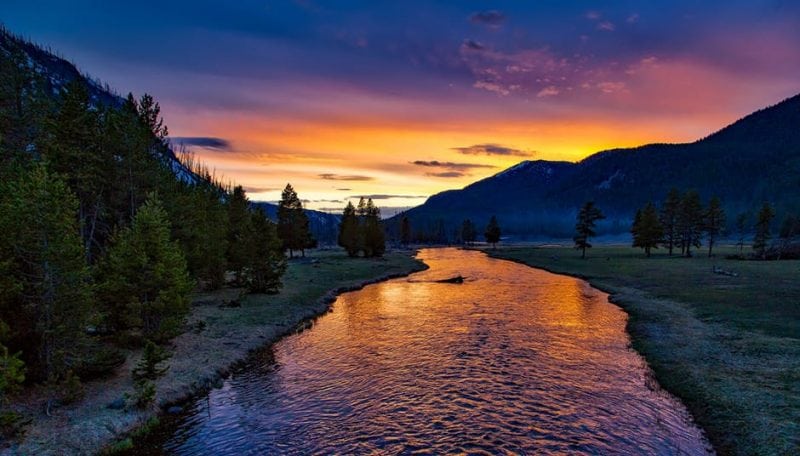
No time to see, in broad daylight
Streams full of stars, like the skies at night
These lines by W.H. Davies describe our general attitude toward the beauty of Nature that surrounds us. Even streams, channels and creeks are still a source of new incredible discoveries. We can see channels and think that the water that flows within the riverbed does not undergo any phenomena. It seems steady and very predictable; however, this is not true.
It has been recently discovered that rivers made of lateral floodplains and that are attached to a central deeper channel experience a wealth of phenomena at the transition from the main channel to the lateral ones. The rivers with this type of geometrical configuration are called “compound channels”. New tools are available to describe fluid flows that greatly enhance our comprehension of these phenomena. A key element is the detection of features called Lagrangian Coherent Structures (LCS) that behave as transport barriers. LCS inhibit mixing across them and play a fundamental role in shaping tracer trajectories and dilution of harmful contaminants. These structures are not seen as touchable material elements; rather, as emerging features of the velocity fields. You cannot see them but only appreciate their effects on the floating objects deployed over the water.
In other words, you can see LCS looking at the tracers moving over the surface of the water. The important discovery is that these LCS do spread out in compound channels. Their presence must not be ignored because they have direct consequences on the abundant wildlife thriving in the floodplains. There are two main positions where LCS emerge in compound channels: along the axis of the main deep channel and at the transition from the former to the floodplain.
The novelty is that in compound channels it is possible to locate LCS next one each other with completely different behaviors. LCS in the central main channel and are called shearless because they do not present any shears; whereas, the ones at the transition from the main channel to the lateral ones do maximize shear. What is shear? Imagine slithering your hand over a table. Well, that’s shear. The phenomenon can occur with any substance. So, these LCS either maximize or minimize shear.
However, they have a common feature: they cannot be crossed; therefore, they have significant practical importance. Let’s think of contaminants or nutrients present in the stream. If they cannot cross LCS, they will concentrate either in the main channel or in the floodplains for long times and with possible negative consequences on the environment. So, let’s follow Davies’ suggestion and find enough time to appreciate streams in broad daylight!
These findings are described in the article entitled Shear and shearless Lagrangian structures in compound channels, recently published in the journal Advances in Water Resources. This work was conducted by Francesco Enrile, G. Besio, A. Stocchino from Università degli Studi di Genova, Italia.









